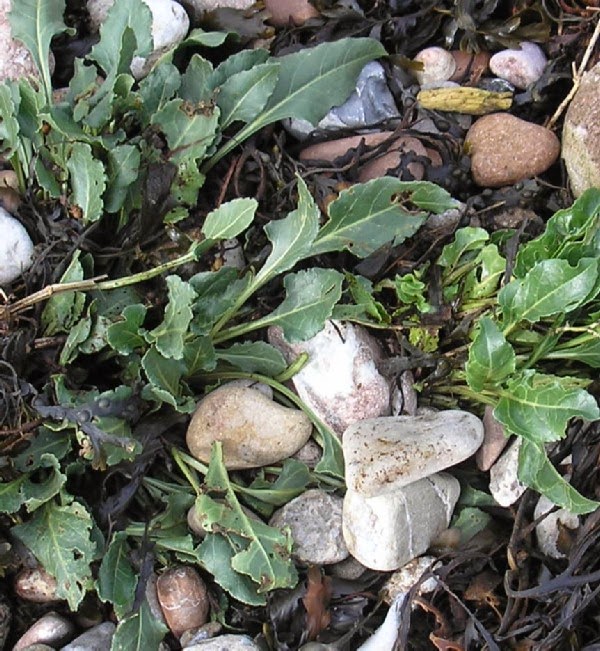Sea Beet amongst seaweed and rocks. Photo by Steve Andrews
Sea beet is a common edible plant found at the top of
beaches and near the sea in the UK and Europe.
Its leaves are very good cooked as greens and taste
very much like spinach. This is not surprising because the plant is an ancestor
of cultivated spinach beet and beetroot. In fact, the sea beet is also known as
wild spinach.
It produces masses of glossy dark green oval or
diamond-shaped leaves in rosettes that can be found all year around. Its flowers
are small and greenish and form in summer and autumn.
Sea beet can be found growing amongst pebbles and
rocks at the top of a beach and on coastal land and is easy to recognise. You
are not likely to find anything else looking like poking its greenery through
the pebbles. It can be found growing where seaweed and other floating rubbish
has been washed up by the tide.
The leaves of Sea Beet. Photo by Steve Andrews
The stems of sea beet and the leaf stalks sometimes
have a purplish-red colouration which shows their link with beetroots.
The leaves of sea beet can be eaten raw in salads as
well as being cooked like spinach. Many people think their flavour is actually
better than spinach we grow and buy.
Richard Mabey recommends it strongly in Food For Free his
classic book on foraging which is now in its fortieth year and contains info with illustrations for some 200 types of edible plant and wild mushroom.
The sea beet is known to botanists as Beta vulgaris ssp. maritma and used to be classed as in the Chenopodiaceae but it is
now in the Amaranthaceae. Many other plants in this family, such as the
goosefoot (Chenopodium album), are
also edible.



No comments:
Post a Comment